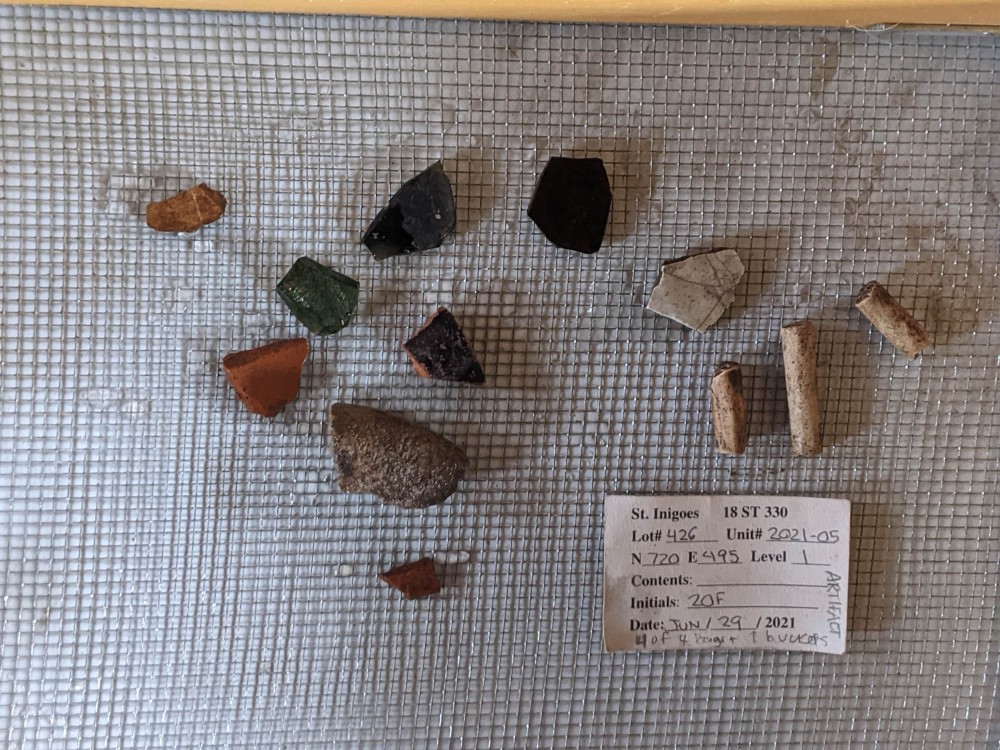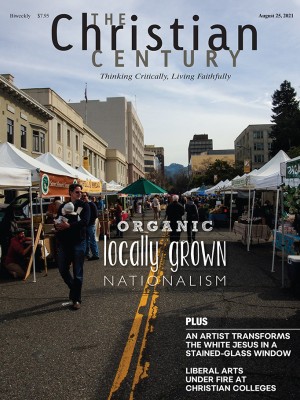Descendants of enslaved people join dig on former Jesuit plantation

Vickie White Nelson, 49, has deep roots in southern Maryland. Her ancestor, Regis Gough—her mother’s great-great-grandfather—was enslaved on a plantation there owned by Jesuits and is listed among the Georgetown University 272, a list of enslaved persons the Jesuits sold to Louisiana plantations.
Nelson has been volunteering, along with several other descendants of the GU272, at an archaeological dig on the former plantation where Gough was enslaved. St. Inigoes, in St. Mary’s County in southern Maryland, is close to two other plantations, Newtown and Bohemia. Historians believe enslaved workers moved between these plantations fluidly.
Read our latest issue or browse back issues.
Nelson has observed excavations at Newtown plantation before, she said, but this one at St. Inigoes was different.
“I liked this dig,” said Nelson, who spent three hours one morning shoveling and sifting through the dirt for artifacts. “They actually let us participate.”
It was a moving experience, she said. “I was able to walk the walk of my ancestors, to see something they saw, touch something they may have touched,” said Nelson.
The two-week dig, which began June 28, was led by two anthropology professors, Laura Masur of the Catholic University of America in Washington, DC, and Steve Lenik of St. Mary’s College of Maryland. Masur said their goal for the dig was to find a former chapel on the site and, if possible, the former slave quarters. But the houses where the enslaved workers lived, Masur said, are difficult to find.
“Often sites that are seen as least important are the ones that are not preserved as well,” Masur said.
While public archaeology often makes space for members of the community, communal involvement is rarer in academic endeavors like Masur’s. But Masur wanted the descendants and members of the southern Maryland community to be involved in the dig. She said about a dozen descendants have come out onto the site during their time at St. Inigoes.
“It’s deeply meaningful for a lot of people to come out here,” Masur said. “They can make of this what they wish to make of it rather than me telling them how they’re supposed to think and feel about it.”
In fact, their presence and involvement inform how Masur conducts her own research. “It makes me reflect more on my own research questions: Are my questions useful, interesting, and respectful to this community?” she said.
Angela Wilson, 62, is another descendant volunteering on the dig. She heard about the St. Inigoes dig when Masur posted about it on a Facebook group for GU272 descendants living in southern Maryland. It was her first dig. She has spent several mornings shoveling through dirt. On her first day, she found a piece of brick. It may have been part of a chapel, she said, adding that these archaeological digs bring a lot of emotions.
“On my very first visit to a plantation, I was angry,” she said. But Wilson and her cousin returned to the plantation to do research, to learn about her ancestors and her history.
“You go through a lot of emotions visiting a plantation, walking in the same steps as your ancestors. It can be eerie. It can be exhilarating,” Wilson said.
Her family has been deeply rooted in St. Mary’s and Charles Counties for a long time. Wilson has lived in southern Maryland her entire life, except when she served in the US Air Force for a decade. A lot of the surnames in her family tree appear on the GU272 list.
“I’m sure at some point I will make a connection from my family tree to the list,” Wilson said.
Wilson, a lifelong Catholic, believes the Jesuits should marry their apologies to repayments. “Somebody should get reparations. If you can identify who the direct descendants are, they should get reparations,” Wilson said.
Vickie White Nelson’s family is formerly Catholic and now Methodist. She wants the Jesuit order to share information that the descendants need to piece together their own history. “They should let us have access to records to learn about our ancestors,” Nelson said, “so we can see who we’re actually connected to.”
Masur said it has been difficult to get the Jesuit community interested and involved in the work of retelling this part of their past.
“Particularly among an older generation of Jesuits, it’s a history that’s already written to them. It’s a strict narrative, and they don’t want to think about changing that narrative at all.”
For Angela Wilson, the experience of accessing history is a chance to get back to something deeply human, a chance to see the conditions her ancestors lived and worked in—and the incomparable feats they accomplished.
“What they actually did was build America,” Wilson said. To see where they labored brings her a sense of rootedness and connection. “It gives you a feeling of peace you didn’t even know was missing. It’s not just about Black or White—it’s about yourself.” —Religion News Service






